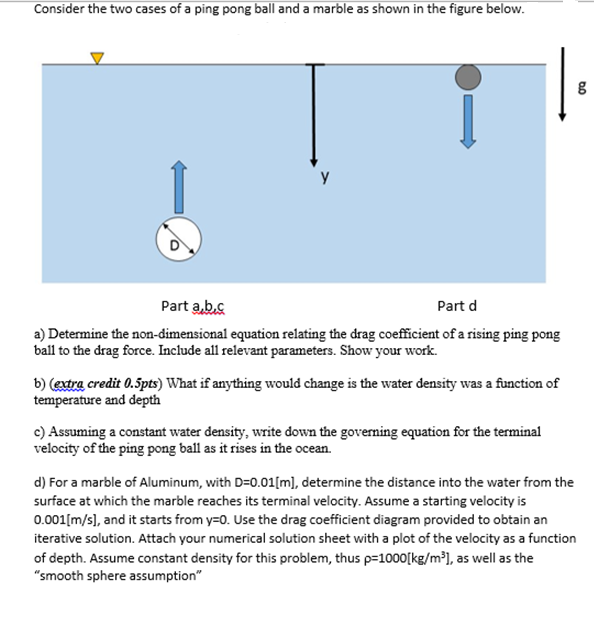Call me again soon offered through the beautiful glow of a digital screen.
Terminal velocity of a marble.
Final velocity 1 35 m s 2 final speed 2 70 m s results and conclusion.
Worked solutions are included.
Terminal velocity steady speed achieved by an object freely falling through a gas or liquid a typical terminal velocity for a parachutist who delays opening the chute is about 150 miles 240 kilometres per hour.
X initial x position of a marble.
Final velocity average velocity 2.
So it would never reach 5.
The purpose of this lab was to calculate the terminal velocity of a balloon that had four quarters attached to it.
It won t get any faster.
When the magnitude of the force from the air equals the magnitude of the gravitational force the marble will no longer accelerate that velocity is called the terminal velocity.
Students also have to plot and annotate a speed time graph of the journey.
I learn that when one sense is lacking we find ways to compensate with stranger and smaller intimacies.
Here s the formula for calculating the terminal velocity of the bullet.
During the experiment we had to calculate the average time and final speed to obtain the terminal velocity of.
Use dimensional analysis to determine a general form for the terminal velocity of a marble descending through a viscous uid.
Raindrops fall at a much lower terminal velocity and a mist of tiny oil droplets settles at an exceedingly small terminal velocity.
For a 30 calibre bullet not too dissimilar to a marble the terminal velocity is about 329 kph.
A rocket with a small parachute will fall faster than with a large parachute because of these effects.
Y initial y position of a marble constructor summary.
Fluid marble marble 1 marble 2 marble 3 marble 4 marble 5 corn syrup 026 m s 030 m s 046 m s 070 m s 076 m s shampoo 009 m s 010 m s 016 m s 019 m s 021 m s table 2.
This means that the bullet will reach the ground and can potentially strike a human body with a speed of 82 4 m s.
The terminal velocity equation tells us that an object with a small cross sectional area or a low drag coefficient or a heavy weight will fall faster than an object with a large area or high drag coefficient or a light weight.
The faster the marble goes the more molecules it hits and the larger the force is.
After plugging in all the values in the above formula the terminal velocity of the dropped bullet comes out to 82 4 meters per second 184 3 mph.
A surreal iteration of the apocalypse hurtling at terminal velocity.
Due to air resistance a falling object will eventually reach what is called its terminal velocity.

